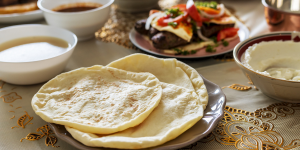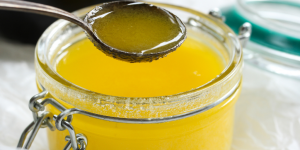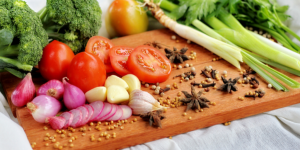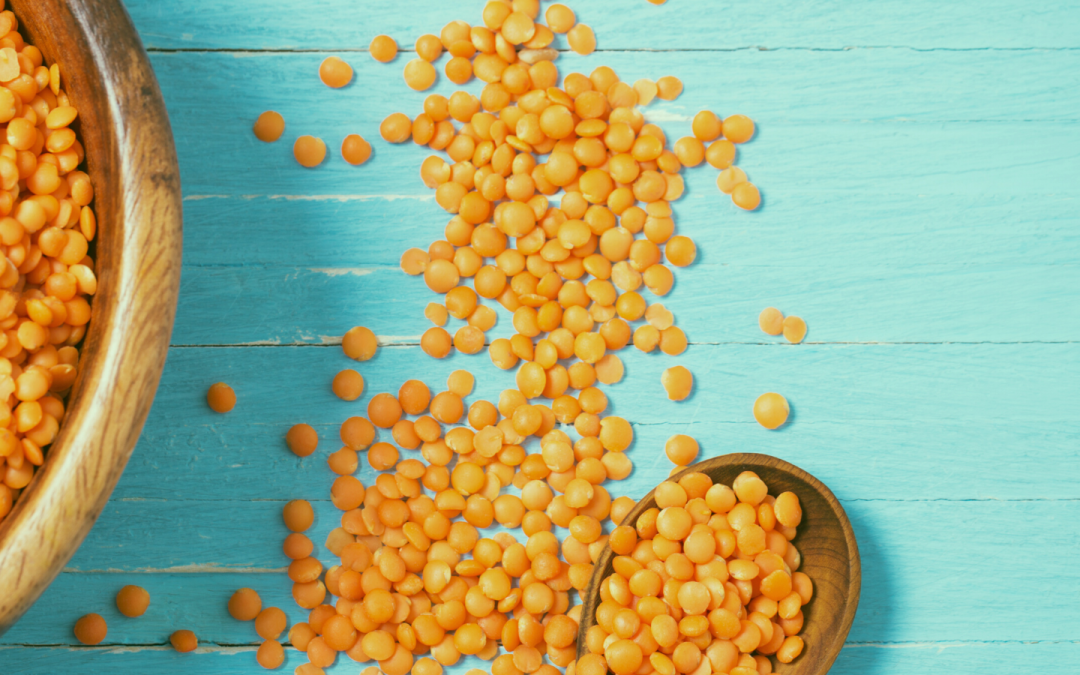 Guest Author Fareeha Jay is a UK Registered Dietitian who is extremely passionate about providing the best available nutrition advice to people with a Southern Asian background. Here she explains how South Asian communities can eat more sustainably, including some simple meal swaps and a delicious recipe. As she points out, many are already eating sustainably without even realising it…
Guest Author Fareeha Jay is a UK Registered Dietitian who is extremely passionate about providing the best available nutrition advice to people with a Southern Asian background. Here she explains how South Asian communities can eat more sustainably, including some simple meal swaps and a delicious recipe. As she points out, many are already eating sustainably without even realising it…
The environmental crisis is urgent and we need to start taking immediate action. A lot needs to be done on policy level by specialists, governments and organisations – but we as individuals also need to take responsibility. One way to do that would be make dietary changes and embrace a sustainable diet.
As the climate change is affecting people from around the world, it is important to understand how cultural diets can be adapted towards sustainable eating. There are around seven million people of South Asian origin in the UK and I have explored their diets to understand how they are affecting climate. Is a South Asian diet contributing to greenhouse gas emissions? Can a South Asian diet be more sustainable?
Importance of Sustainable Eating
Although there is still no global consensus on what constitutes sustainable eating, according to the Food and Agriculture Organisation of the United Nations, it is a diet comprising of foods which have a lower environmental impact. Not only does it protect biodiversity and ecosystems, it is also nutritionally adequate, affordable, culturally appropriate, healthy and safe.
Following a sustainable diet doesn’t mean to go vegan. The Eat Lancet commission suggests that it only means shifting towards a more plant-based diet including more legumes (beans, peas, lentils, peanuts), whole grains, vegetables, fruits and nuts; and less animal-based foods, especially red meat and processed meat. Limiting refined grains and added sugars confers improved health and environmental benefits.
Shifting to sustainable eating would mean a substantial global shift toward healthy dietary patterns, large reductions in food loss and waste and major improvements in food production practices – all of them benefiting people’s health and the planet. It could save 11 million lives every year and help restore and safeguard crucial ecosystems.
Sustainable Eating and South Asian Communities
Generally, there is a great lack of awareness in recognising the contribution of livestock to climate change. It is secondary in shaping food choices; preferences are based on taste, price, health and food safety.
In my own experience, the idea of sustainable eating among South Asians is extremely novel and very few have knowledge in this regard. There is scarcity of research and guidance on the topic.
Among the South Asian populations, different cultures and practices co-exist together. South Asians of Pakistani origin are least likely to be vegetarians, whilst many of Indian origin are vegetarians and even vegan because of their religious beliefs. Among Bengali communities, having fish is a matter of pride.
Despite the variations, traditionally South Asian diets are rich in a variety of vegetables, fruits, beans, nuts, and grains. One study concluded th at the typical diet of South Asians in the UK includes chapatti, rice and paratha with low consumption of meat dishes; vegetable curries mostly contribute towards energy intake. However, studies suggest that after migration there is a substantial increase in fat, meat and dairy foods and a switch from whole grains and pulses to more refined sources of carbohydrates.
at the typical diet of South Asians in the UK includes chapatti, rice and paratha with low consumption of meat dishes; vegetable curries mostly contribute towards energy intake. However, studies suggest that after migration there is a substantial increase in fat, meat and dairy foods and a switch from whole grains and pulses to more refined sources of carbohydrates.
Sustainable foods in the South Asian Diet
There are countless examples of sustainable South Asian meals, some of which can be seen in Table 1 below. These are five foods commonly eaten by South Asian families that have environmental benefits and some health advantages as well:
Daal: The BDA environmentally sustainable diet recommends plant-based proteins such as lentils and pulses. Different types of daals are consumed by South Asian families on a regular basis; maash (split urid), masoor (red lentils), chana (gram split), mong (yellow split gram), lobya (kidney beans) to name a few. They are cooked with a variety of spices and consumed with roti or rice.
Potatoes and vegetables: A variety of vegetable curries are eaten as main meals. These are usually eaten with roti /chapati. In addition to recommending whole grain the BDA sustainable diet also recommends an intake of potatoes as part of starchy carbohydrates.
It is worth noting that potato is a staple in the South Asian diet. Potato is usually coupled up with other vegetables such as aloo matar (potatoes and peas), aloo gobi (potatoes and cauliflower), aloo paluk (potatoes and spinach), aloo baingan (potatoes and aubergine) and the list goes on.
Masala Dosa/Idli: Made from lentils and rice and usually consumed with sambar (vegetable curry). A complete sustainable meal eaten at breakfast, lunch, dinner or even as a snack.
Fish: Fish can be a suitable choice if eaten from sustainable sources. It is considered more efficient than terrestrial animal production (very much depending on the type of production and method of capture).
Some South Asians might have fish every day. There are many ways it is eaten, but usually it is in the form of curry or fried.
Table 1
| Sustainable South Asian foods |
| Lentils, beans and pulses |
| Tarka Daal, Rajma, Cholay, Chana Masala or Chotpotti, Cholar Daal, Gujrati toor daal, Amti Dal ,Arhar ki daal, Misri roti, Mash daal, Masoor daal, Chana daal |
| Potatoes and vegetables |
| Vegetables: Methi Paluk, Chana paluk, Karelay, Fry Bhindi, Baingan Ka Bharta, Loki ki sabzi, Tori, Kadu ka salun, Tinday, Shaljam, Bun gobi ka salun, Gobi ka paratha, Mooli ka paratha.
Potatoes: Aloo ka paratha, Aloo matar gajar (potatoes, peas and carrots), Aloo gobi (potatoes and cauliflower), Aloo paluk/Aloo saag (potatoes and spinach), Aloo baingan (potatoes and aubergine) Aloo methi, Aloo ki bhujia , Dum aloo, Aloo ki tikki, Vada pav |
| Fish |
| Masala Fry, Tenga,Hutki shira, Masala fish, Tok Maachh,Muri Ghonto |
| Other foods |
| Pakoray, Bhaji, Samosay, Poha, Idli, Dosa, Kachori, Chana Chaat, Fruit Chaat |
Points to consider
- To encourage sustainable eating, BDA sustainable diet recommends ensuring that taste is not compromised. A very important thing to consider here is that all above foods are eaten without making a conscious effort to eat sustainably: in other words, many South Asians are eating sustainably without realising that they are!
The least Sustainable South Asian foods
Red meat
The resources required to rear animals is a significant contributor to climate change. Red meat is responsible for 24.2% of dietary-related greenhouse gas emissions. Some households will have meat every day in the form of kebab, koftay (meat balls) and mutton karahi etc (detail in table 2).
Most of the time it is coupled with vegetable curries, lentils, or rice in the form of matar gosht (peas and meat), karelay gosht (bitter gourd and meat), paluk gosht (spinach and meat), pulao gosht (rice and meat) or daal gosht (meat and lentils).
Lassi/Raita (Dairy)
The carbon footprint of dairy is a major contributor to dietary emissions. It is the second biggest contributor after red meat, at 14.3%.
Traditionally lassi is consumed with meals but generally in summers. Raita or plain yogurt is commonly consumed with food.
Soft drinks
In a study on South Asian men in the UK, it was concluded that 69.8% of the men were having unhealthy intakes of sugar-sweetened beverages. This is a trend I have personally noticed with my clients and not just men. There is a growing trend of having soft drinks with food amongst families including children.
Soft drinks and fruit juice require more energy to produce and have higher transport costs, making it the third biggest contributors to our dietary greenhouse gas emissions, at third biggest contributors to our dietary greenhouse gas emissions, at 9–10%.
Ghee
The South Asian cuisine involves the use of ghee in almost all its recipes. For some of the communities it is even considered sacred and the purest substance for use. It is also a part of some religious rituals.
Foods cooked in vegetable oil would be a better choice, as vegetable oils do not contribute to greenhouse gas emissions in the UK.

Table 2
| Least Sustainable South Asian Foods |
| Red meat |
| Karahi Gosht, Tikka boti, Chapli Kebab, Achar Gosht, Seekh Kebab, Qeema
With vegetables: Aloo gosht (potatoes and meat) Matar gosht , (peas and meat ) Paluk gosht (spinach and meat ), Gobi Gosht (cauliflower and meat ), Tinday gosht , Lauki gosht , Aloo Qeema (potato and mince ) Shimla mirch qeema (pepper with mince), Karelay gosht (bitter gourd with meat), Qeema karela (bitter gourd with mince) |
| Dairy |
| Lassi: Meethi Lassi , Namkeen Lassi , Masala lassi , Mango Lassi
Raita: Cucumber raita, Mint raita, Potato raita, Vegetable raita |
Points to consider
- According to the Eat Lancet Commission brief, for sustainability we should aim for no more than 14g of red meat per day (raw weight). On the other hand, the British Dietetic Association (BDA)’s Environmentally Sustainable Diet recommends no more than 70g red meat per day (cooked weight). They are not directly comparable, due to the difference in raw weight vs. cooked weight; however, it’s still quite a difference!
The BDA acknowledge that the Eat Lancet recommendations are ‘a clear indication of the degree of change necessary to sufficiently reduce environmental impact from our food system’: ie, they are optimal targets. But we need to balance ‘optimal’ with what’s realistic to achieve, considering that individual diets vary markedly. - As mentioned above, not all South Asian communities eat meat. Those who do almost always eat it in combination with vegetables or lentils, which means overall consumption tends to be lower than in other diets.
- Considering the religious and cultural conflict in relation to ghee consumption, the focus should be on the amount of ghee to be taken, rather than just advising on swapping with healthier oils.
Health benefits of Sustainable South Asian diet
Prevalence of diabetes is high among South Asian communities in UK, with an increased risk of complications such as coronary heart disease and end-stage renal disease.
To reduce the risks, it is advised to include starchy carbohydrates in all meals. Cutting down on fats and choosing unsaturated fats and oil is also recommended. Ideally, more fruits and vegetables should be taken and at least two portions of fish should be included in the diet each week. Sugary foods and meat should be limited, and more beans, lentils and pulses should be added to the meals.
All these guidelines tie up very well with a sustainable diet, showing the co-benefits of improving the environment and improving health at the same time.

Food Waste
Food in landfill contributes to global warming. To eat healthily and sustainably, Eat Lancet suggests cooking more at home, packing leftovers into lunchboxes and using creative recipes. Not only will this be good for your health and your budget, it will also reduce food waste.
Not wasting food is part of South Asian culture and those with strong religious beliefs use their religiosity as a motivating factor to reduce food waste. Cooking from scratch and using seasonal produce are the positive aspects of traditional South Asian food. There is a need however to reinforce this tradition because there has been an assimilation of other habits over the years.
Summary
Our food choices can not only optimise our health but also help to shape a more environmentally sustainable planet. South Asians have been eating sustainably without even realising it! Overall, a traditional South Asian diet is rich in plant-based foods such as legumes, pulses, lentils and whole grains, with fewer animal sources. The concept of not wasting food and eating local and seasonal produce is ingrained in the families because of cultural and religious reasons. The problem specific to this community is the intake of ghee and sugar, with some communities having more meat.
Meal Swaps
| Breakfast | Swap | Tips |
| Paratha in Ghee
Fried Eggs |
Paratha from wholemeal flour
Made with vegetable oil |
Watch your portion of paratha
Brush oil on the pan and paratha Add a portion of seasonal vegetables |
| Lunch/Dinner | Swap | Tips |
| Aloo Qeema (lamb/beef/chicken mince with potatoes) and Naan | Adding peas, green pepper, and carrots to Aloo Qeema
Cook in vegetable oil Wholemeal Roti |
Whilst cooking reducing the amount of mince and bulking up the meal with vegetables.
Can also try soya mince |
| Lunch/Dinner | Swap | Tips |
| Karahi Gosht with Naan | Reducing the portion of karahi gosht and including a serving of daal and a portion of vegetable curry.
Cook in vegetable oil Wholemeal Roti |
Chana daal goes well with meat.
Kaddu (gourd) goes well with chana daal. |
| Lunch/Dinner | Swap | Tips |
| Tenga (Fish curry) with Rice | Brown rice
Include a portion of bortha (roast boiled vegetables) Cook in vegetable oil
|
Watch your portion of rice.
Making sure the fish you eat is from a sustainable source. Swap the recipe between oily fish and white fish |
Recipe
Rajma (Kidney Bean Curry)
I am sharing a recipe of kidney beans eaten by almost all South Asian heterogenous groups, with a little recipe modification.
Ingredients:
- Kidney Beans: 2 tins (can use dry kidney beans as well)
- Vegetable Oil: 4 tablespoons
- Onion: 1
- Tomato: 1
- Ginger paste: 1 teaspoon
- Garlic paste: 1 teaspoon
- Coriander powder: 1 teaspoon
- Garam masala: ½ teaspoon
- Ground black pepper: ½ teaspoon
- Turmeric powder: ¼ teaspoon
- Red chilli powder: Heaped 1 teaspoon (optional)
- Green chillies: To taste
Note: Tinned kidney beans already have salt, so there’s no need to add
Method:
- Heat the oil and sauté onions, until they soften and change colour.
- Add ginger, garlic paste and cook for a minute.
- Tip in chopped tomatoes and all the spices.
- Stir and cook few minutes. Add water and cook further for few minutes, turning it into a paste.
- Add kidney beans (tinned/boiled) and water. Bring to boil.
- Cover lid and bring down the heat. Cook for around 40 minutes until the curry is nice and thick.
- Garnish with chopped green chillies.
Can enjoy with:
- Boiled rice
- Roti/chapatti
Related MyNutriWeb Content
South Asian Eatwell guide (2021). 60 minute webinar with Fareeha Jay RD discussing the importance of culturally competent advice and the use of her new South Asian Eatwell Guide
South Asian Eatwell Guide (2021). Blog post by Fareeha Jay around the new Eatwell Guide where you can download the PDF of the South Asian Eatwell Guide
Sugar Awareness in the South Asian Diet (2021). Blog post by Fareeha Jay with practical advice for sugar within the South Asian diet
Shifting Food Systems (2021). E-symposium with leading experts about sustainable eating, including a practical interview on transitioning towards a plant-based diet and supporting resource blog
Changing Behaviours: From Policy to Table (2021) – Half day e-symposium looking into sustainable eating and the role of behaviour change and supporting resource blog
Masala Oats Recipe (2021) – Recipe video showing how to make Fareeha Jay’s masala oats
Sustainable Healthy Eating – What Does this Really Look Like? (2019) – 60 mins webinar with Dr Fabrice Declerck and RD Elphee Medici
Sustainable Diets – BDA One Blue Dot Webinar (2019) – 60 mins webinar with Tom Embury, Clare Pettinger and Lynne Garton







Truly great to read this report and see much needed representation in this space! Great work.
Thanks for Great Content.I will also share with my friends & once again thanks a lot.
Mutton Karahi Recipe